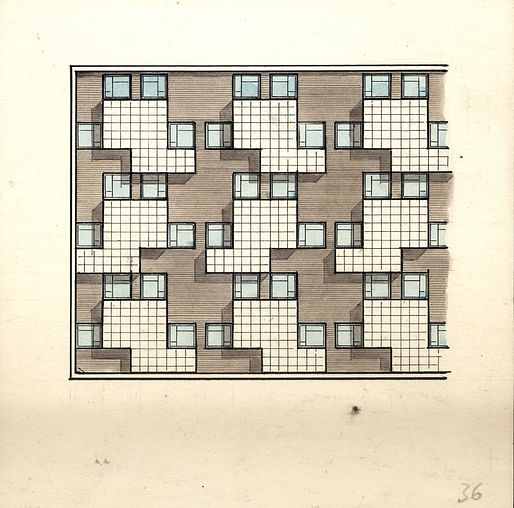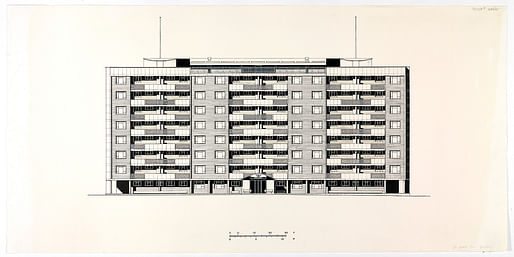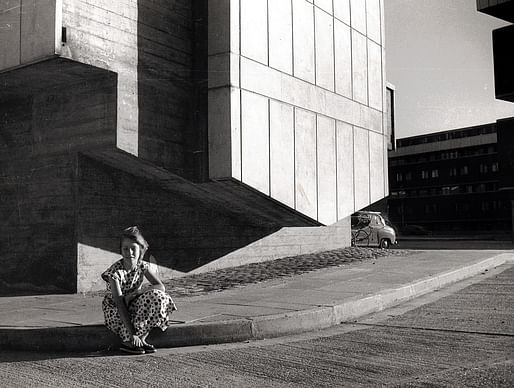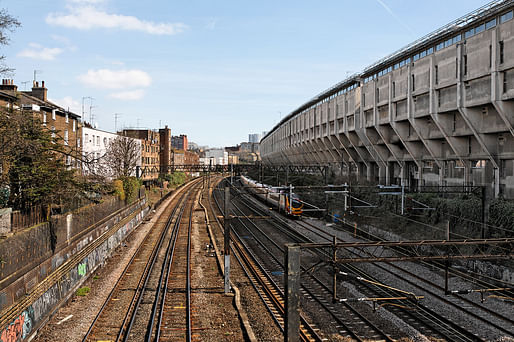
The RIBA and Victoria & Albert Museum dug into their archives to present the exhibition, “A Home for All: Six Experiments in Social Housing”, opening on November 24 at the V&A Museum in London. From the first examples of modernist architecture in England to a DIY kit that encouraged residents to design their own homes, the exhibition features six pioneering projects that present a different experimental approach in social housing design.
A selection of original architectural drawings, photos, site plans, and buildings models will be showcased alongside quotes from residents, architects, and stakeholders about the experience, intention, and reception of each project. Another notable element in the exhibition is an archival and contemporary poster and protest material that explore the changing attitudes toward social housing policy, from the early 20th century to today.
Read on for more about the projects.
Spa Green, London by Tecton, design: 1938, construction: 1946-49


Project summary: “‘Nothing is too good for ordinary people.‘ – Berthold Lubetkin, 1946.
This estate was one of the first examples in England of Modernist architecture used for social housing, conceived using principles of health and hygiene. The 126 flats span the width of each block, providing sunlight, air and views on both sides. Bedrooms overlook a quiet courtyard while the living spaces are situated on the street side. An innovative aerofoil-shaped roof was designed to accelerate wind-flow for drying laundry. It was radically generous social housing for its time.”
Keeling House, London by Denys Lasdun & Partners, 1954-59

Project summary: “‘[Keeling house was] a protest against treating the human being as a statistical pawn… [it] sought to re-establish, irrespective of size, the human scale, the sense of place, the sense of identity and, above all, privacy.’ – Denys Lasdun, 1968.
Keeling House was an early experiment in ‘cluster block’ housing. This innovative form placed four 16 storey blocks around a free-standing services tower. The linked blocks were designed to balance the existing community of the street with a sense of seclusion. Privacy was achieved with short access balconies that serve only two flats and face each other at oblique angles. The shared central platforms provided the communal services such as laundry.”
Alexandra Road Estate, London by Neave Brown, 1968 – 78 for Camden Council Architects’ Department

Project summary: “‘Everything on Alexandra Road is {…} a notion of continuous, mutually enhancing function. It sounds pretentious but it’s just the idea of making things work together.’ – Neave Brown, 2017
The Alexandra Road Estate is a pioneering example of high-density, low-rise housing. Neave Brown was vehemently opposed to high-rise residential towers and instead proposed a ‘social street’ for this awkward site alongside a railway line. This shared street encourages a convivial sense of community neighbourliness and belonging.”
Lions Green Road, Croydon by Mary Duggan Architects, 2017 – ongoing

Project summary: “‘Each pavilion takes an even poise, always looking outwards due to the pinwheel plan. This formation eliminates notions of front and back secure versus insecure; creating multi-facing apartments’ - Mary Duggan, 2018
This project was commissioned by Croydon Council’s development company, Brick by Brick, and represents both a renaissance and a new direction in council-led social housing provision. The design imagines residential blocks as sculptural pavilions within a natural landscape -offering access to views, air and light. Each block has a mixed tenure of private and social residents with the landscape given over to communal activities, blurring boundaries between private residence, shared space and publicly accessible parkland.”
Byker Estate, Ralph Erskine Arkitektkontor for Newcastle City Council, 1969-82
Project summary: ‘“People wanted their corner shops, pubs, laundries… They wanted functional spaces that were also places for meeting friends and neighbours, places for ‘a good laugh’ as well as for practical use.’ — Ralph Erskine, 1988
The Byker Estate is an ambitious example of participatory design that involved extensive consultation with existing residents. The architect set up his office on site, where future residents could drop in to examine the plans and discuss the project. The estate replaced a neighbourhood of terraces, which were demolished and replaced in stages to enable neighbours and families to be re-housed together. The estate was a clear break from concrete modernism that had come to define post-war social housing and remains a striking example of an estate embodying the complexity of a community.”
Primary Support Structure and Housing Assembly Kits (PSSHAK), London by Nabeel Hamdi and Nicholas Wilkinson of the Greater London Council Architects’ Department, 1971 – 1979
Project summary: “‘As architects, we are not occupied with designing dwellings, but with designing the possibilities for dwellings to be made.’ - Nabeel Hamdi and Nicholas Wilkinson, RIBA Journal, 1976
PSSHAK began as a student project at the Architectural Association in the late 1960s. The architects developed a flexible design process which enabled occupants to play an active part in the design of their homes. Each block was a shell that could be sub-divided to contain different combinations of individual dwellings. Each tenant was invited to design their layout with help from the architects and an instruction manual.”
“A Home for All: Six Experiments in Social Housing” will be on display through May 23, 2019.

2025 Design for Freedom Competition: Ethical and Equitable Materiality to End Forced Labor
Register by Wed, Apr 9, 2025
Submit by Wed, Jun 4, 2025

Land Art Generator Initiative 2025 Fiji: Climate Resilience for Island Communities
Register/Submit by Mon, May 5, 2025

2025 Lyceum Fellowship - A Community for the Future of Food
Register/Submit by Thu, May 22, 2025

MICROHOME Kingspan 2024/25
Register by Thu, Feb 13, 2025
Submit by Tue, Mar 18, 2025
No Comments